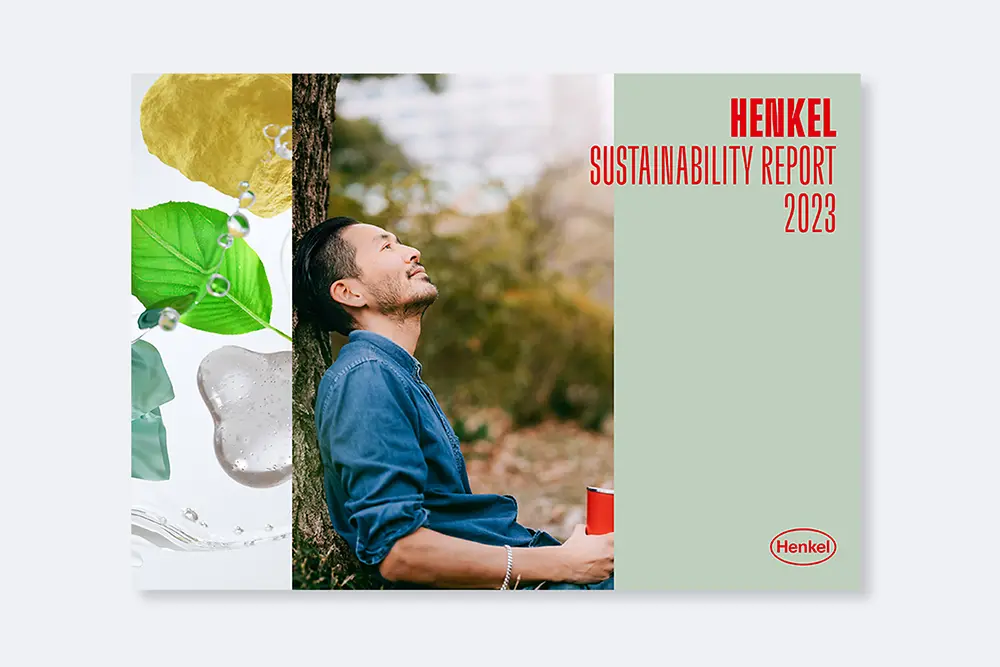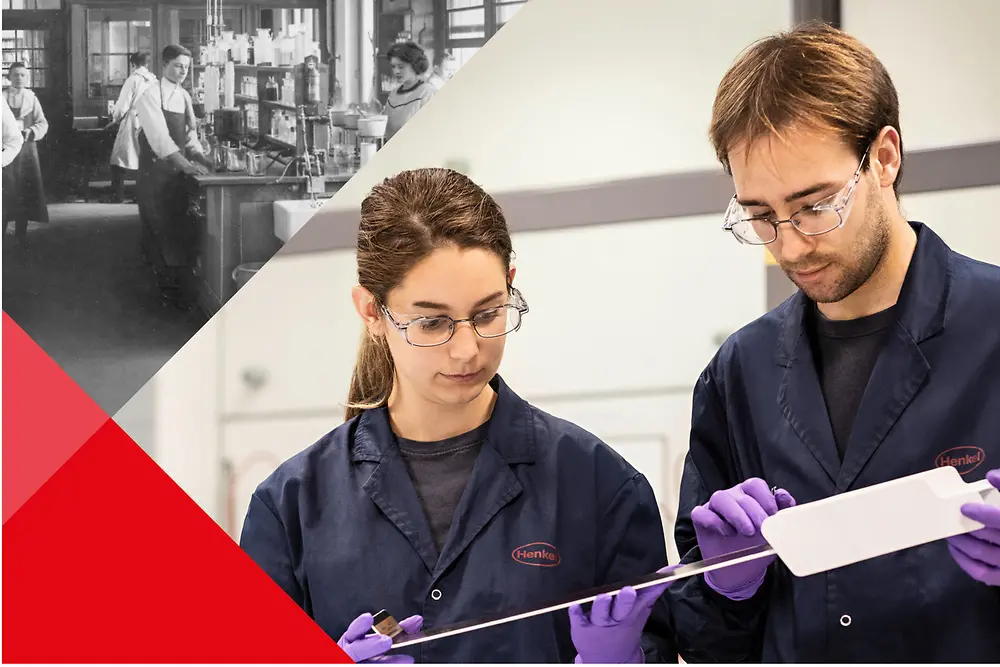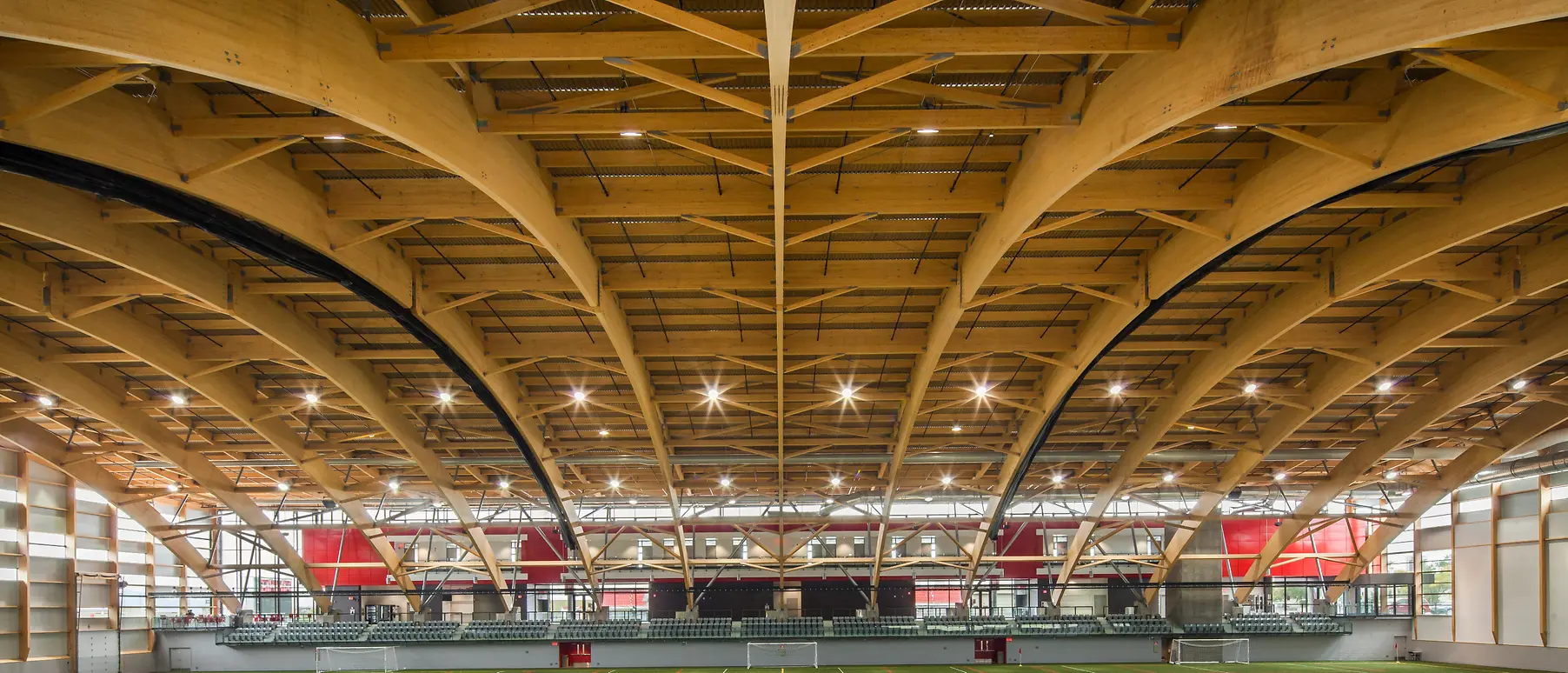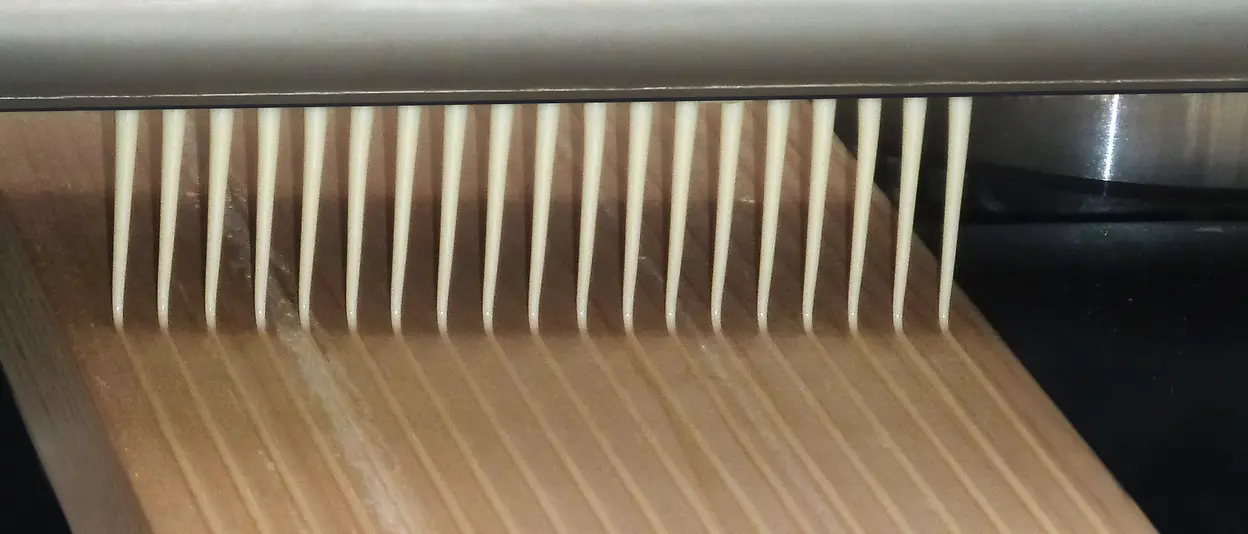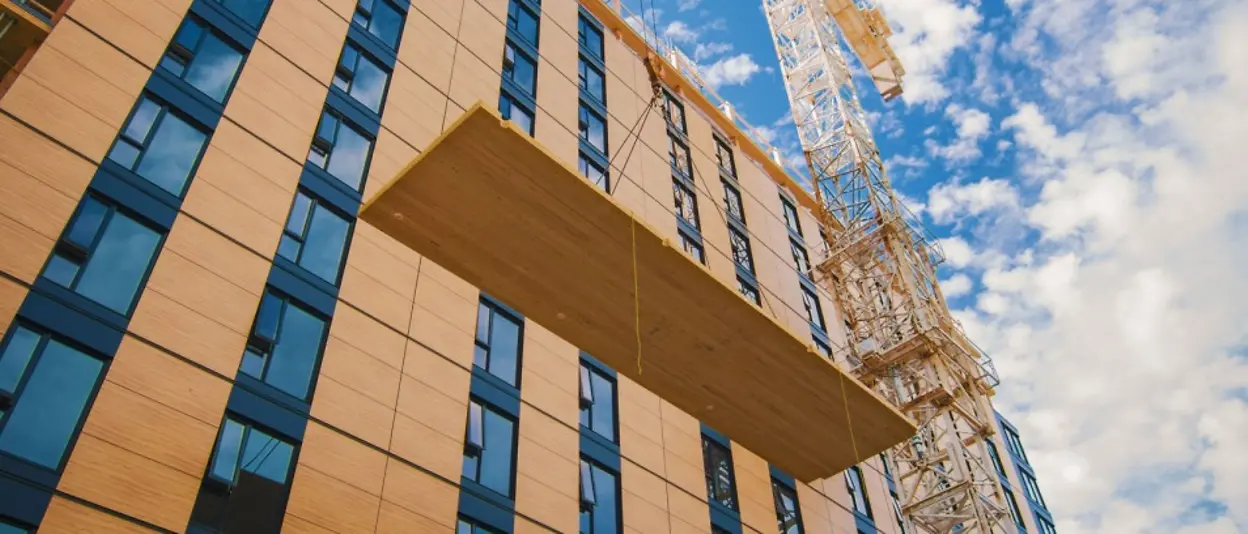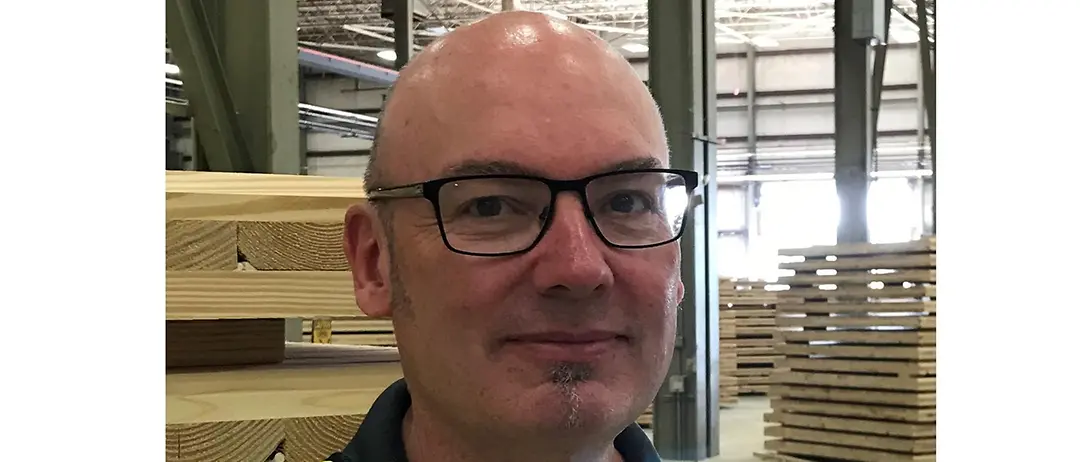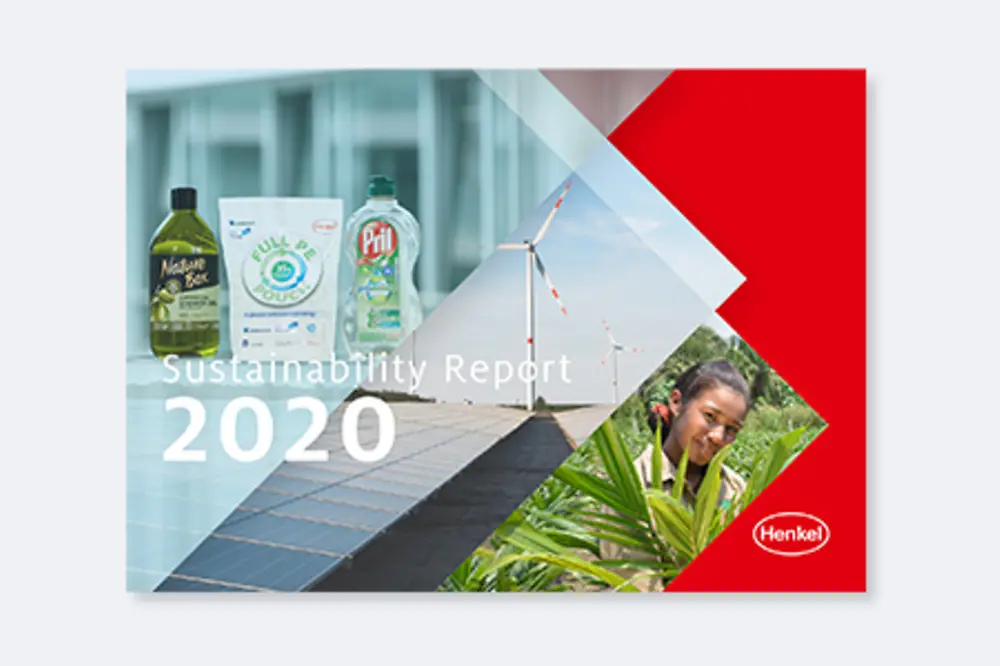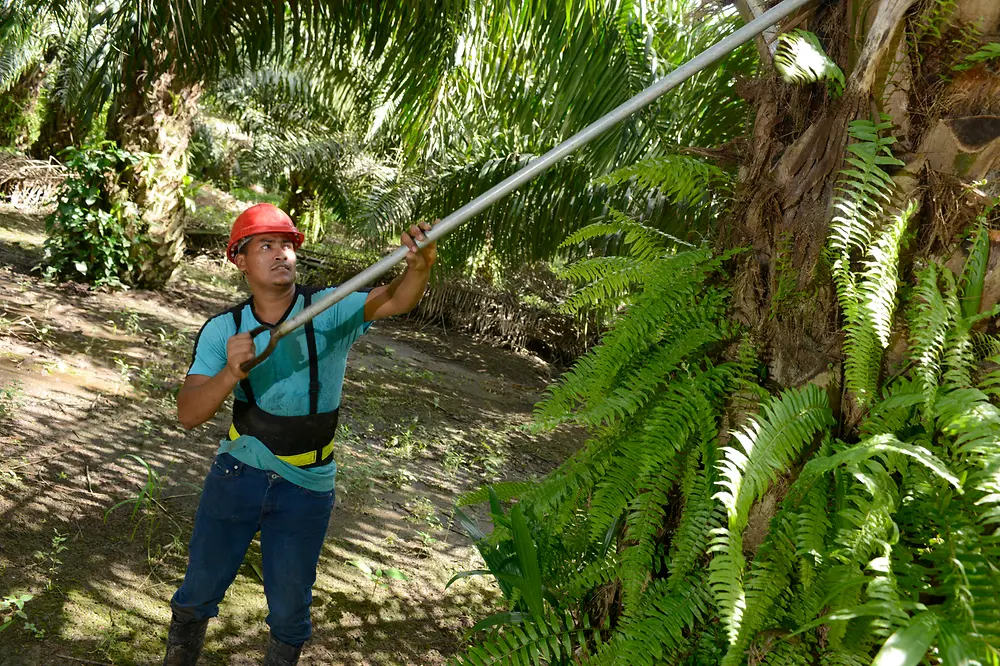Découvrez les marques de nos trois branches d’activité : Adhesive Technologies, Beauty Care (Cosmétiques) et Laundry & Home Care (Détergents et produits d’entretien).
Serving as ambassadors of sustainability
Stade Telus is a 97,000-square foot sports facility at Laval University in Quebec City, Canada. Partnering with Nordic Structures, Henkel’s adhesive is used in the mass timber applications. This material choice resulted in approximately 1,500 fewer tons of CO2 being emitted during construction.
At Henkel, we are all ambassadors of sustainability. Every day, we model our commitment to a greener, more sustainable future. Of course, we are selling adhesives -- and within the mass timber industry, we are selling adhesives that are not only instrumental in building construction, but are also changing the way we live, work and care for the planet.
What is mass timber, and how is it better for the environment than other building materials?
Mass timber is a structural load-bearing element, made from solid lumber glued to form columns, beams and large format panels. Unlike traditional materials, such as concrete or steel, mass timber is renewable – when you harvest a tree, you can plant another tree. Mass timber is earthquake-resistant; it’s difficult to burn, and it sequesters carbon dioxide. Mass timber can be used to construct virtually anything, including high rises, multi-family homes, office buildings, factories and warehouses. It’s lighter than concrete or steel, so less carbon is emitted in transit. There’s an emotional benefit, too: According to industry studies1, people feel calmer and more productive in wooden buildings than they do in concrete or steel structures.
Conversely, concrete and steel are mined from the ground and never replaced. They require intensive energy to produce. Half of the cement used to make concrete in North America comes from offshore, and most of the steel does, too, creating additional transportation emissions.
How does Henkel contribute to mass timber’s sustainability?
Henkel supplies a significant percentage of the adhesives used by the mass timber industry in North America. LOCTITE® HB X Purbond is the only single-component adhesive approved by the American National Standards Institute (ANSI) in the USA and the Canadian Standards Association (CSA) in Canada for mass timber construction in North America. It contains no solvents, creates no liquid waste and releases no toxic emissions. It is 100% solids and delivers twice the mileage vs. traditional adhesives, so customers only need to purchase and ship half as much. It cures at room temperature, without requiring additional energy to adhere. LOCTITE® HB X Purbond foams during curing which is believed to help reduce air leakage in the finished elements. This can support heating and cooling efficiency for buildings.
Henkel is at the forefront of green construction that is better for the planet. We’re creating adhesives that help change the world.
Chris Whelan, Director, Business Development, Engineered Wood Adhesives
Where is mass timber construction being used right now?
Mass timber construction is already being used across North America! In 2017, the University of British Columbia in Vancouver, Canada, completed a 19-story student housing building using CLT (cross-laminated timber) and Henkel adhesives. In addition, leading companies like Walmart and Structurlam, a leading mass timber manufacturer in North America, have announced that they have teamed up to utilize mass timber construction to build Walmart’s new headquarters campus in Arkansas.
I believe that projects such as this will help drive greater adoption of sustainable timber construction. A recent study, The Marshall Effect, concluded that if mass timber construction continues to grow as it has, the building industry can expect a negative carbon dioxide impact by 2034 – with mass timber projects offsetting concrete and steel.
What does it mean to be ambassadors of sustainability?
Henkel is committed to supporting the construction industry’s ecologically sustainable innovations. Every day, we’re helping create net-zero carbon dioxide buildings. We’re at the forefront of green construction that is better for the planet. We’re creating adhesives that help change the world.
1 Wood, Well-being and Performance: The Human and Organizational Benefits of Wood buildings, Graham Lowe Ph.D. 2020
About the author
With a background in construction, design and engineering, Chris Whelan, Director of Business Development, offers a unique perspective and depth of experience providing adhesive solutions to the engineered wood market in North America. A 25-year veteran with Henkel, Chris is an active member on industry committees with ASTM International (formerly American Society for Testing & Materials), American National Standards Institute and Canadian Standards Association. Connect with Chris on LinkedIn!
